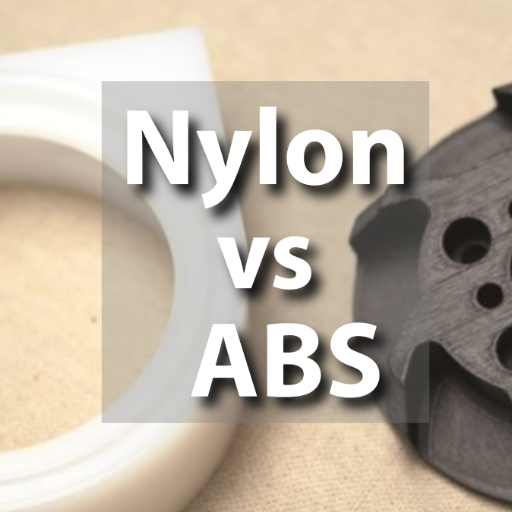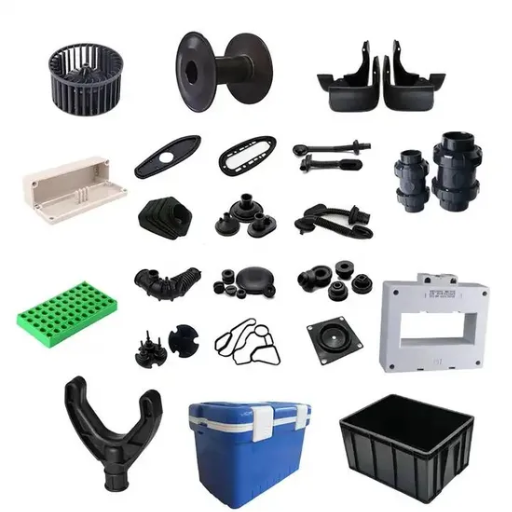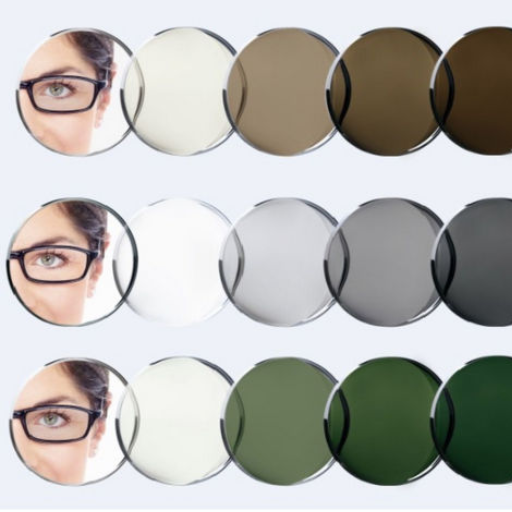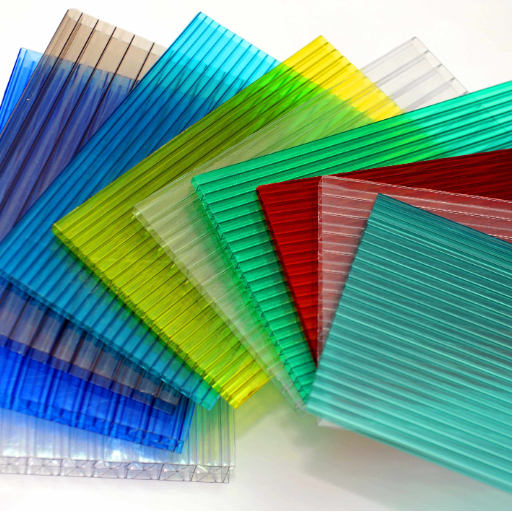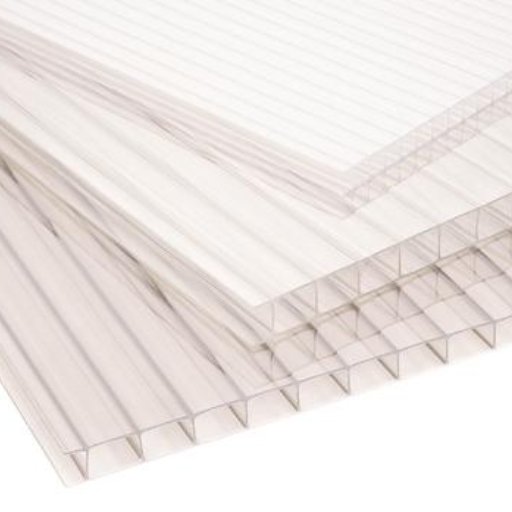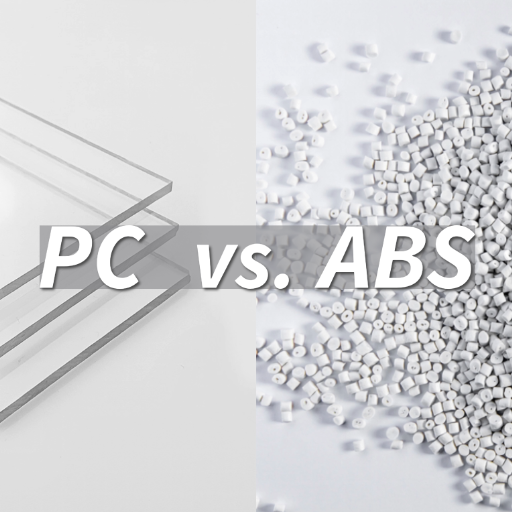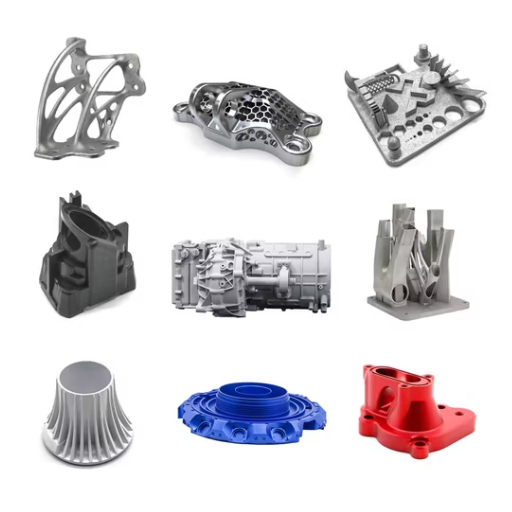POM (Polyoxymethylene) plastic gears are highly regarded for their remarkable accuracy, longevity, and functionality under tough conditions, which makes them a favorite among modern mechanical systems. These low-friction, high-strength, and excellent dimensional stability gears are widely accepted across different industries including automotive, electronic, and robotics. This guide is meant to encapsulate everything POM plastic gears offer, their practical uses, advantages, and key features. Be it an engineer, designer, or an individual interested in advanced materials, this article will outline for you why POM plastic gears form an integral piece in the jigsaw puzzle of dependable and efficient mechanical systems.
What is POM plastic and why is it used for gears?

POM polyoxymethylene, or acetal, is an engineering-grade thermoplastic that has abrasive strength, stiffness, and low friction properties. It is most commonly used for the manufacturing of gears as it can retain its dimensional stability under different conditions, is wear resistant, and is self-lubricating which lowers maintenance needs. Because of these traits, POM is able to produce light, strong, and highly efficient gears within various industries.
Understanding POM material properties
This exemplary POM feature, together with the self-lubricating attribute, makes it a primary candidate for use in high-reliability applications. To sum up, I would reiterate that POM is extremely useful in engineering owing to the remarkable combination of properties it possesses. From my experience, I must state that POM singlehandedly changes the game in regard to the material characteristics at hand. Its impressive mechanical strength combined with exceptional dimensional accuracy enables it to perform exceedingly well in sophisticated applications. I have often noticed POM perform well in applications where low friction and wear are crucial, which allows POM to outperform substitute materials enduring extreme conditions.
Advantages of POM over other engineering plastics
POM is unique among engineering plastics owing to its remarkable mechanical attributes such as high stiffness, low friction, and excellent dimensional stability. In particular, its resistance towards chemical and wear allows for greater performance in demanding applications of precision components such as gears, bearings, automobiles, and numerous other parts. Furthermore, POM’s self-lubricating characteristic reduces maintenance efforts and prolongs the lifespan of existing systems, making it more efficient and cost effective compared to alternatives.
Comparing POM to nylon and acetal for gear applications
I have noted time and time again that POM consistently outperforms the others. POM, for instance, does not absorb moisture like Nylon does, which means it does not suffer from dimensional instability. It also maintains its contiguous environmental conditions. This stability becomes pivotal when dealing with gears that require a high degree of precision and accuracy. POM is also on par with Acetal in regards to benefits received, but unlike Acetal, POM frequently has greater resistance to wear and friction. This leads to smoother operations and extended lifespan of the component. In the end, POM emerges as the best material for serving ease in maintenance and repair, efficiency, and great structural strength in POM based gear systems.
How are POM plastic gears manufactured?

The fabrication of POM gears is accomplished by precision injection molding, which starts with heating up POM resin and injecting it into a mold cavity which reflects the dimensions of the gear. After the gear has cooled down and solidified, it is then extracted from the cavity. The process used above provides high dimensional precision, remarkable surface quality, and significant uniformity. This makes it optimal for developing complex and precise gears.
Injection molding process for POM gears
I would say that the efficiency as well as the reliability of the injection molding process for POM gears is unquestionable. The process starts with heating the POM resin to its melting point so that it can conveniently flow into the mold cavity. Achieving this is highly dependent on the precision employed; in this case, the mold should inductively be crafted to embody every detail capturing all the micro features of the gear. When the molten plastic is injected, steps are quickly undertaken to cool the plastic so that the material can solidify while achieving the appropriate measurements. Not only does this process yield gears which are accurate and durable, but it also allows for mass production with relentless quality control, which is very important in meeting various application standards.
CNC machining of POM gears
POM gear CNC machining is remarkably effective for producing components with fine detail and uniformity. It uses sophisticated computer-controlled machinery that enables the carving of intricate shapes and features from POM (polyoxyethylene) stock, a precision material. CNC machining is extremely flexible and is applicable for certain distinct designs, ideal for prototyping and low-to-medium production volumetric tasks without sacrificing the structural integrity and durability of the components.
Achieving high precision in POM gear production
the key to achieving high quality POM gears is a combination of sophisticated technology, careful design, and thorough quality control. Using CNC machining, we are able to detail every component precisely so that all components supplied meet the performance expectations of the customers. It’s not just about the machinery—we carefully choose the appropriate grades of POM, analyze environmental conditions such as temperature and load, and conduct comprehensive testing. These processes help us manufacture gears that are dependable and robust, which a wide variety of our customers require.
What are the different types of POM plastic gears available?

Each application has its own unique requirement which is why these POM plastic gears are custom made for applications like spur POM gear which serves a parallel shaft along with a power source, helical POM gears which are used for higher capacity applications due to the angled teeth, worm screws used where there is a need for a slow and self locking capability and bevel gears used where shafts are intersecting at an angle. All forms of the gear have a unique modular design based on specific industry standards.
POM spur gears and their applications
I am able to give a detailed explanation of POM spur gears and their relevance in different applications. Due to its remarkable features, POM, or Polyoxymethylene, is a very flexible thermoplastic material that is often used in gear production. There is a great demand for POM spur gears because most consumers wish to economize on weight and friction.
First, let’s discuss the main drivers of efficiency for POM spur gears:
- Material Properties – POM features high stiffness, outstanding dimensional stability, and resistance to wear and chemicals. These characteristics make it a preferred material for gears with moderate prolonged usage.
- Low Friction Coefficient – One of POM’s distinguished features is the naturally low friction which is offered, eliminating the need for lubrication. Such features make POM spur gears ideal for low maintenance applications with movement.
- Lightweight -POM spur gears are much lighter compared to metal gears without compromising their strength. This is highly advantageous in the automotive and consumer electronics industries, which value weight reduction.
- Noise Reduction -Low noise production of POM spur gears is crucial in applications such as home appliances, printers, and robotic systems where quiet operation is a priority.
Applications of POM Spur Gears
Bearing these characteristics in mind, mix POM spur gears can be found in virtually all industries. They are widely used in small motorized systems, such as drones and toy cars where their lightweight structure and functional accuracy can be noticed. Also, these parts can be found in washing machines and coffee makers where low noise and high efficiency are greatly appreciated. In addition, POM gears are used in printers and scanners because they help to deliver trouble-free service with little upkeep.
It is easy to see why these POM spur gears have become commonplace POM components with such parameters and advantages.
POM worm gears and their unique features
As I reflect on my experiences involving both plastic POM gears and metal gears, it is evident that each type has its advantages depending on the specific use case. POM plastic gears are particularly beneficial where there are stringent requirements for lower weight, lower noise, and cost effectiveness. Their resistance to wear, coupled with self-lubricating features, make them exceptional candidates for devices that are low- to medium-load. Conversely, metal gears are often favored in heavy-duty cases because of their high strength, robustness, and ability to deal with very high torque. However, the decision to use POM plastic or metal gears rests entirely on the combination of the working load, required efficiency, and expenditure limit. Drawing on my experiences, evaluating the needs of the application helps in making the right material decision that would enhance system performance.
POM rack and pinion systems
The POM rack and pinion systems are crucial for tasks needing precise linear movement and effective force output. Their low friction, high wear and dimensional stability, and superb wear resistance makes them fit for use in robotics, automotive, and industrial machinery. The systems achieve precision, facilitate maintenance free operations, and guarantee long life even under constant use.
How do POM plastic gears compare to metal gears?

In scenarios which require light weight, very low noise, and corrosion resistance, POM plastic gears have several advantages over metal gears. While POM gears are more cost effective and provide excellent wear resistance coupled with minimal lubrication requirements, metal gears are better at handling higher loads along with extreme heat. Due to these advantages, POM gears are extremely suitable in cases and industries which prioritize weight reduction and quieter operation on gear systems.
Advantages of POM gears over metal counterparts
the use of POM gears as opposed to metal ones has many perks that are practical and worthwhile. For starters, they are exceptionally lightweight, making them necessary in scenarios where system weight reduction is essential, such as in automotive or aerospace parts. Additionally, the low noise level of POM and the quieter home appliances business is another environment where other forms do better. Furthermore, a more timeless benefit in many applications is minimal corrosion along with very little lubrication maintenance requirements, which leads to reduced upkeep needs. With all these aspects taken into consideration, it is much easier to see POM gears as a suitable and easily accessible solution for engineers wanting great performance at less cost and complexity than using metals.
Limitations of POM gears compared to metal
Even though POM gears are advantageous in many ways, they fall short in certain aspects when compared to metal gears. Their load bearing capability is relatively low, which renders them unfit for high torque applications. Even with these capabilities, these geometries can withstand further stress or erosion disintegration where metal alternatives excel. Furthermore, POM gears also have decreased thermal resistance, making them more susceptible to deformation or lowered functionality in high temperature regions. Ultimately, POM gears have greater abrasive impact wear resistance, which under extreme industrial conditions, renders these gears unfit for continual heavy loads.
Selecting between POM and metal gears for specific applications
Choosing between POM and metal gears almost always starts with the unique conditions of the task at hand. For low-noise consumer electronics or more delicate machinery, I find that POM gears are often the best option due to their self-lubrication, silent operation, and affordable pricing. However, in cases where higher torque, greater durability, and thermal stability are required, such as with automotive transmissions or heavy machinery, I tend to favor the use of metal gears because their strength provides reliability even in harsh industrial environments. Ultimately, each material is best suited for a graspable set of operational requirements, and meeting those demands is what ensures dependable gear performance.
What are the best practices for using POM plastic gears?

While using POM plastic gears, considering their specific applications is equally important as noting their limitations and strengths. Remember that these materials should only be used in medium load and moderate temperature environments to avoid excessive deformation and wear. Using POM gears in high speed applications will require associated regular lubrication to minimize friction and prolong the life of the gears. POM gears are best suited for use in lightweight parts that are required to be corrosion resistant, thus these factors must be given utmost importance at the stage of designing and selecting materials. Further, more accurate assembly and alignment of parts will enhance their efficiency and durability.
Proper lubrication techniques for POM gears
From the work I’ve done, I know that adequate lubrication of POM gears enhances their operational efficiency and durability. For such applications, I suggest low viscosity synthetic lubricants because of their superior capability to minimize friction and heat generation. Further, one should never use grease or oils that can compromise the polymer over time. Establishing a timeline for consistent lubricant application ensures its effectiveness, is essential in high-speed or high-load environments. Moreover, I recommend cleaning the gears before a lubrication cycle in order to avoid unnecessary damage along the way.
Maximizing the lifespan of POM gears
Efficient lubrication using polymer-safe lubricants is essential to ensuring longevity of POM gears as it minimizes friction and wear. Routine maintenance practices such as contaminant clean up, promote optimal function of the gear system. Sticking to the manufacturer’s instructions concerning limit on speed and load minimizes unnecessary strain on the gears as well. Undertaking these measures coupled with regular observatory inspections promotes performance and durability over time.
Handling and storage recommendations for POM gears
In the case of POM gears, I always stress the need to keep the environment clean and dry when handling or storing them. Over time, dust and moisture can deteriorate the material, so a clean storage space free of contaminants is vital. Moreover, POM gears should be put away in a manner that avoids both prolonged direct sunlight and extreme temperatures, as these both contribute to material degradation. Based on past experiences, I suggest the use of protective packaging to avoid any kind of physical deformation or damage during transporting or handling. Taking these precautions guarantees the gears are in great condition to be put to use in the future.
How do you choose the right POM plastic gear for your application?

Selecting the appropriate POM plastic gear entails knowing the precise details of your system. In particular, assess the gear’s effective load, speed of operation, and temperature or humidity levels. Make sure the size, shape, and the teeth of the gear are compatible with other materials to avoid excessive destruction and guarantee optimal functioning. Additionally, evaluate the application’s lifespan—some cases may need strengthened POM gears for tougher applications. If all these factors are combined with your operational objectives, the selected gear will provide the required efficiency, reliability, and durability.
Understanding gear modules and pitch
Although they might appear complicated at first glance, I will explain gear modules and pitch simply. The gear module conveys the relation of the pitch diameter to the number of teeth defining the size of the gear and the spacing of the teeth: it is important when meshing with other gears within the systems. The term pitch, and in particular the circular pitch, concerns the distance between matching points in bordering teeth along the pitch circle. These measurements are crucial for proper compatibility and efficient power transmission. By concentrating on these parameters at the design stage, I ensure efficient operation of the gear train and eliminate excessive wear or misalignment.
Calculating load and force requirements
Begin by establishing the torque and rotational speed necessary for an application so that load and force requirements can be calculated. Torque can be estimated with the formula Torque = Force x Radius, where the radius is defined as the distance from the center of the gear to the point where force is applied. Next, think about the gear ratio, since it will affect the input torque transmission through the gear system. In light of the operational requirements, consider the material strength and safety margins along with the type of load such as static, dynamic, or shock. These calculations will help improve operational performance while avoiding gear damages.
Considering environmental factors in gear selection
While taking into account environmental elements in gear selection, I would always highlight analysis of the operating context. Gear performance and useful life can be greatly influenced by temperature and humidity levels, exposure to corrosive substances, or dust and debris accumulations. For example, in applications with elevated temperatures, it is important to choose materials with sufficient thermal resistance to avoid deformation or excessive wear. Likewise, if the gears are subjected to moisture or corrosive chemicals, it is mandatory that protective coatings and/or corrosion resistant materials be used. I also consider ability to lubricate the gears in question so as to achieve the best performance in the given conditions. Considering these issues at this stage can reduce downtime and maintenance costs significantly in the future.
What are the latest innovations in POM plastic gear technology?

The most thrilling modern Undertaking in the mechanical plastic technology is perhaps the process of creating ‘super’ blends or composites. These materials typically have greater resistance to wear and dimensional changes, even when influenced by high loads and elevated temperatures. Also, most POM producers now use some form of lubricant as an internal plastic additive during molding which minimizes the need for external lubrication and improves overall efficiency. More progress has also been made in modern precision molding processes which allow the manufacture of highly precise gears with better surface finish and texture. All these improvements allow POM plastic gears to be used in more challenging conditions, such as in automotive applications and more sophisticated robotics systems, without the concern of POM plastic gears’ material and mechanical characteristics deteriorating.
Advancements in POM material formulations
The innovation of POM materials developments focuses on improving their performance and widening their application scope. With the addition of reinforced composites and other performance enhancing additives, POM materials demonstrate greater resistance to wearing, maintaining heat, and having friction. These advancements allow for precise and dependable POM gears to operate under extreme environments, making them essential in high-stress fields including automotive, aerospace, and robotics industries.
High-precision manufacturing techniques for POM gears
The adoption of ultra-precision manufacturing methods for POM gears is a drastic change for ensuring their functionality and dependability. CNC intricately mills the part while state of the art injection molding achieves remarkable dimensional accuracy, consistency, and repeatability. POM gears with tight tolerances and smooth surface finishes can now be manufactured to reduce operational noise and wear. Moreover, the utilization of CAD and simulation tools further facilitates the production process by eliminating prospective problems at the earliest stage possible. These sectors fuel advancements in automation and automotive technologies where precision is the strictest.
Emerging applications for POM plastic gears
The lightweight and low-friction characteristics of POM plastic gears are proving useful in modern applications like electric vehicles (EVs) which require high energy efficiency and low wear on drivetrain parts. POM plastic gears are also being used in renewable energy systems like wind turbines, since they can endure harsh environmental conditions while still maintaining accuracy. Additionally, advances in medical devices have made it possible for POM surgical gears to be used in surgical robotics and diagnostic devices because of their remarkable biomaterial durability and compatibility. These emerging applications highlight the heightened significance of POM plastic gears across other advanced industries.
Reference
- POM Processing: Unlocking Durability and Precision in Manufacturing – Discusses how POM processing ensures durable and precise components for various industries.
- Precision POM Processing: Durable Solutions for Manufacturing – Explores how POM enhances durability, precision, and efficiency in manufacturing.
- Is POM Plastic Strong? Discover Polyoxymethylene’s Durability – Highlights POM’s high tensile strength, wear resistance, and low friction, making it ideal for precision parts like gears.
Frequently Asked Questions (FAQs)
Q: What are the advantages of using POM plastic gears over other plastic gear materials?
A: POM (polyacetal) plastic gears offer several advantages over other plastic gear materials. They have excellent dimensional stability, low moisture absorption, high strength, and good wear resistance. POM can be used in applications requiring high precision and durability, making it suitable for various industries, including medical equipment and automotive parts. Additionally, POM gears can operate at high speeds and handle higher loads compared to some other plastic materials.
Q: How does the lubrication of plastic gears, particularly POM gears, differ from metal gears?
A: The lubrication of plastic gears, including POM gears, is generally less critical than for metal gears. POM has inherent self-lubricating properties, which can reduce the need for external lubrication in many applications. However, for high-load or high-speed applications, proper lubrication can still extend the gear’s life and improve performance. When lubricating POM gears, it’s important to use compatible lubricants that won’t degrade the plastic material.
Q: What are the key considerations when using plastic gears made of polyacetal (POM)?
A: When using plastic gears made of polyacetal (POM), consider the following factors: operating temperature range, load capacity, gear size and design, mating gear material, and environmental conditions. POM gears perform well in many applications but may not be suitable for extremely high temperatures or highly corrosive environments. It’s also important to account for the lower strength compared to metal gears when designing the gear system.
Q: How do POM plastic spur gears compare to nylon gears in terms of performance?
A: POM plastic spur gears generally offer better dimensional stability and lower moisture absorption compared to nylon gears. This makes POM gears more suitable for applications requiring high precision and consistent performance in varying humidity conditions. Nylon gears, however, may have better impact resistance and can be more cost-effective in some applications. The choice between POM and nylon depends on the specific requirements of the application, such as load, speed, and operating environment.
Q: Can POM be used for other types of gears, such as plastic worm gears or plastic bevel gears?
A: Yes, POM can be used to manufacture various types of gears, including plastic worm gears, plastic bevel gears, and plastic miter gears. POM’s low friction coefficient and good wear resistance make it suitable for worm gear applications. For bevel and miter gears, POM’s dimensional stability and ease of machining allow for the creation of precise gear teeth geometries. However, the specific gear type and application requirements should be carefully considered when choosing POM as the material.
Q: What manufacturing methods are used to produce POM gears?
A: POM gears can be manufactured using several methods, with the most common being injection molding and machining. Injection molding is ideal for high-volume production of plastic gears, offering cost-effectiveness and consistency. For lower volumes or more complex designs, CNC machining can be used to mill POM gears with high precision. Some manufacturers, like KHK Gear, offer both injection-molded and machined POM gears to suit different application needs.
Q: How does the force on the gear affect the performance and lifespan of POM gears?
A: The force on the gear directly impacts the performance and lifespan of POM gears. While POM has good strength and wear resistance, it’s important not to exceed its load capacity. Excessive force can lead to premature wear, deformation, or gear tooth failure. To maximize the lifespan of POM gears, it’s crucial to properly design the gear system, considering factors such as gear size, tooth geometry, and operating conditions. In high-load applications, reinforced plastic or alternative materials may be necessary.
Q: Are there any special considerations for using POM gears in medical equipment?
A: When using POM gears in medical equipment, several factors must be considered. POM’s low moisture absorption and good chemical resistance make it suitable for many medical applications. However, it’s important to ensure that the specific grade of POM used meets biocompatibility requirements for medical devices. Additionally, sterilization methods should be carefully chosen, as some techniques may affect the properties of POM. The gear design should also account for the potentially stringent precision and reliability requirements in medical equipment.







